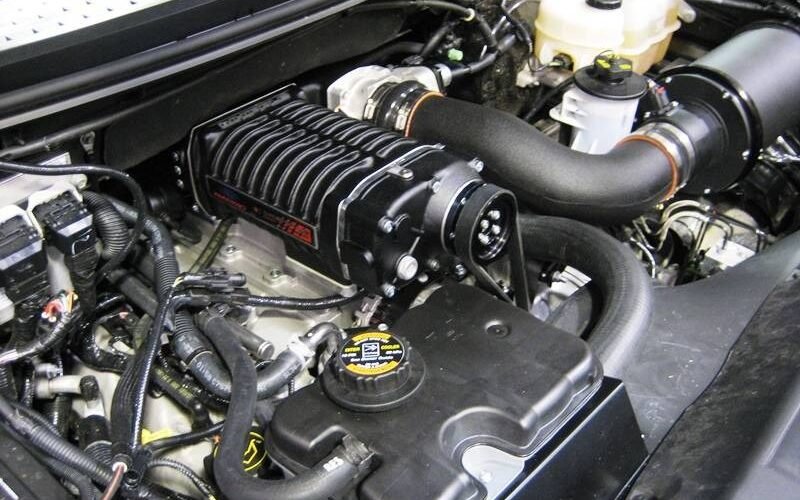You know that weird rattle under your car you’ve been ignoring for weeks? Or the slow rise on your temperature gauge every time you’re stuck in traffic? They might seem like minor quirks — until they suddenly aren’t.
The truth is, it’s often the smallest components in your vehicle that protect you from the biggest breakdowns. While we tend to obsess over engines, tires, and transmissions (rightfully so), there’s a quiet crew of unsung heroes working behind the scenes to keep your car smooth, safe, and road-trip ready.
Today, we’re spotlighting three of them: the exhaust hanger, cooling system fittings, and the oddly-named but crucial cat clamp. Let’s dive into why these parts matter more than you think — and how upgrading them could save you time, stress, and a whole lot of money.
1. The Exhaust Hanger: Your Exhaust’s Best Friend
Let’s start underneath the car — literally. Your exhaust hanger is a simple rubber or metal component that supports your exhaust system and keeps it suspended safely under the vehicle.
When it works, you don’t notice it. When it fails? You’ll hear every bump, feel every vibration, and possibly drag half your exhaust across the parking lot.
Symptoms of a Failing Exhaust Hanger:
-
Loud rattling or banging under the car
-
Drooping or dragging exhaust pipe
-
Increased vibration in the cabin
-
Exhaust leaks (and failing emissions tests)
Think of the exhaust hanger as the strong, silent type. It holds everything in place, absorbs vibrations, and prevents strain on more delicate exhaust components. Replacing a worn hanger is cheap. Replacing a cracked catalytic converter because your exhaust wasn’t supported? Not so cheap.
Pro Tip: Opt for high-quality polyurethane or stainless steel hangers for added durability — especially if you live in a rust-prone climate.
2. Cooling System Fittings: The Guardians of Engine Health
Next up: the cooling system fittings. These small but mighty connectors are responsible for directing coolant through your engine, radiator, and heater core. If a hose is the freeway, the fitting is the on-ramp — without it, nothing flows.
Unfortunately, stock fittings can crack over time, especially under extreme heat or pressure. And when they do, your engine can overheat fast.
Here’s What Makes Up a Reliable Cooling System:
| Component | Function |
|---|---|
| Radiator | Cools the engine coolant |
| Cooling Hoses | Transport coolant throughout the system |
| Cooling System Fittings | Connect hoses to engine, radiator, heater, etc. |
| Thermostat | Regulates coolant flow based on engine temperature |
If just one fitting fails, your whole cooling loop is compromised. The worst part? Fittings often leak just enough to escape notice… until your temperature gauge redlines.
Modern cooling system fittings made from anodized aluminum or reinforced composite materials can handle higher pressures and temperatures. Plus, they resist corrosion — which means no nasty surprises when you’re 200 miles from home.
3. The Cat Clamp: A Thief’s Worst Nightmare
Now let’s talk security.
Catalytic converter theft has skyrocketed in recent years, especially for hybrid vehicles and trucks with high ground clearance. And replacing a stolen converter can cost anywhere from $900 to $2,500. Enter: the cat clamp.
Despite its quirky name, the cat clamp is a serious piece of theft prevention hardware. It’s essentially a cage or hardened steel bracket that wraps around your catalytic converter, making it far harder (and more time-consuming) to steal.
Why You Need a Cat Clamp:
-
Deters thieves with visible protection
-
Takes longer to remove, often sending crooks elsewhere
-
Saves you from expensive repairs and downtime
-
Some insurance companies offer discounts for having one installed
If your vehicle has a valuable catalytic converter — or you just want peace of mind in a sketchy parking lot — investing in a cat clamp is a smart move.
The Real Cost of Ignoring the Small Stuff
So why do these components matter so much?
Because when they fail, they create cascading problems. An exhaust hanger breaks → the pipe sags → it stresses the cat → the converter cracks. A cooling system fitting leaks → coolant drops → engine overheats → head gasket blows.
All for want of a part that costs less than a dinner date.
Let’s Put It in Perspective:
| Component | Cost to Upgrade | Potential Damage if Ignored |
|---|---|---|
| Exhaust Hanger | $10–$30 | Broken exhaust, emissions failure |
| Cooling System Fittings | $15–$60 | Overheating, engine damage |
| Cat Clamp | $100–$250 | Catalytic converter theft ($1000+) |
Upgrades That Pay for Themselves
It’s easy to fall into the trap of only fixing problems when they show up. But savvy car owners know that preventative upgrades — especially to small, affordable parts — offer some of the best returns on investment.
When you upgrade your cooling system fittings, install a high-quality exhaust hanger, or lock in your cat with a cat clamp, you’re not just preventing future breakdowns. You’re investing in:
-
Engine longevity
-
Lower maintenance costs
-
Peace of mind
-
Better resale value
Final Thoughts: Don’t Wait for the Breakdown
It’s not always the flashy upgrades that make the biggest difference. Sometimes it’s the overlooked parts — the ones hiding underneath, behind the engine bay, or bolted to your undercarriage — that are doing the most to protect your ride.
So next time you hear a rattle, smell something off, or see a drip under your car, don’t brush it off. Check the exhaust hanger, inspect those cooling system fittings, and if you haven’t already — secure your converter with a cat clamp.
Trust us, your future self (and your mechanic) will thank you.
Would you like help choosing the best parts or installing them yourself? Let me know — I’m happy to guide you through it!
